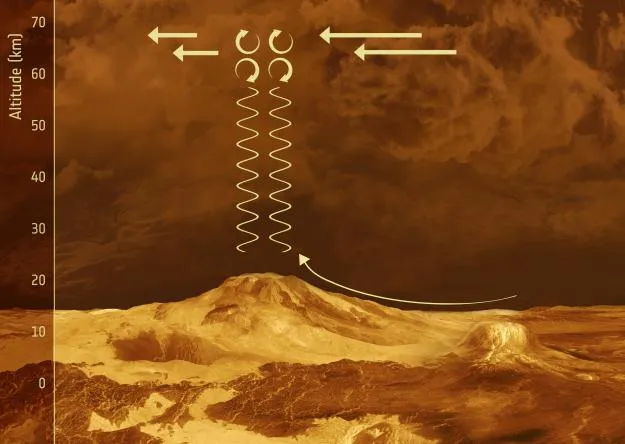Microbes in the Clouds of Venus
New insights on life in an unlikely place
/https://tf-cmsv2-smithsonianmag-media.s3.amazonaws.com/filer/db/78/db7806a8-3c2d-488f-a01a-3c10fa126c16/venus-volcanoes.jpg)
In a paper just published in the journal Astrobiology, Sara Seager from MIT and colleagues suggest a way that microbial life could permanently reside in the lower atmosphere of Venus. The idea that microbes might exist in the Venusian clouds, at an altitude of 50 to 65 kilometers above ground level, was proposed more than 50 years ago by the late Carl Sagan, and has since been advanced by many other authors, including myself.
The possibility of life in such an exotic place may seem outlandish at first. But keep in mind that Venus used to be in the habitable zone of our Solar System, and that “habitability” needs to consider a planet’s entire lifespan. In fact, one hypothesis holds that three of the four inner planets—Venus, Earth, and Mars—harbored surface life early in the Solar System’s history. Venus subsequently got too hot, so life may now remain only in the atmosphere. Mars got too cold, so life may only exist underground today. Only Earth is hospitable enough to keep a diverse and humming biosphere.
Given that this idea has been around for years, what’s new about Seager’s work? For one thing, previous papers didn’t elaborate on what life in the clouds means, and how it might interact with the atmosphere. The only exception was a 2004 paper by myself and colleagues, in which we pointed out that sulfur (specifically a compound called cyclooctasulfur) could be used by microbes as a UV sunscreen and a means for converting ultraviolet light to other wavelengths of light that could be used for photosynthesis. We speculated that this could be the basis for an ecosystem at Venus, where certain chemotrophic organisms complete the nutrient cycling.
One problem with this scenario was that many of these microbes would fall through the clouds into the lower haze layer and meet a fiery end. So we estimated that they would only reside in the clouds for about a month, and that their reproduction rates in the atmosphere would balance the loss of microbes falling out of the clouds. Seager and her colleagues have come up with a much more elegant solution. They suggest that the droplet habitat in which the microbes reside would inexorably grow, and would be forced by gravity to settle in the hotter, uninhabitable layer below the Venusian clouds. As the droplets evaporate during settling, the microbes would dry out, and the lower haze layer would become a depot for desiccated, dormant life. But upward drafts would regularly lift the dormant microbes back into the clouds, where they would be rehydrated and become active again.

Some of these microbes would still be lost. But that kind of life cycle would increase the chances that an aerial biosphere could last for many millions of years, and may still be there today.
Admittedly, the idea of life in the Venusian atmosphere remains very speculative. Seager herself points out how extreme that environment really is, more so than any known environment on Earth. But the door of possibility has been cracked open a little wider. And if there is a chance of life on our twin planet, we should investigate. There are some cool ideas out there for how to do it, including with airships. Let’s hope some space agency will make it happen.
/https://tf-cmsv2-smithsonianmag-media.s3.amazonaws.com/accounts/headshot/Dirk-Schulze-Makuch-headshot.jpg)
/https://tf-cmsv2-smithsonianmag-media.s3.amazonaws.com/accounts/headshot/Dirk-Schulze-Makuch-headshot.jpg)